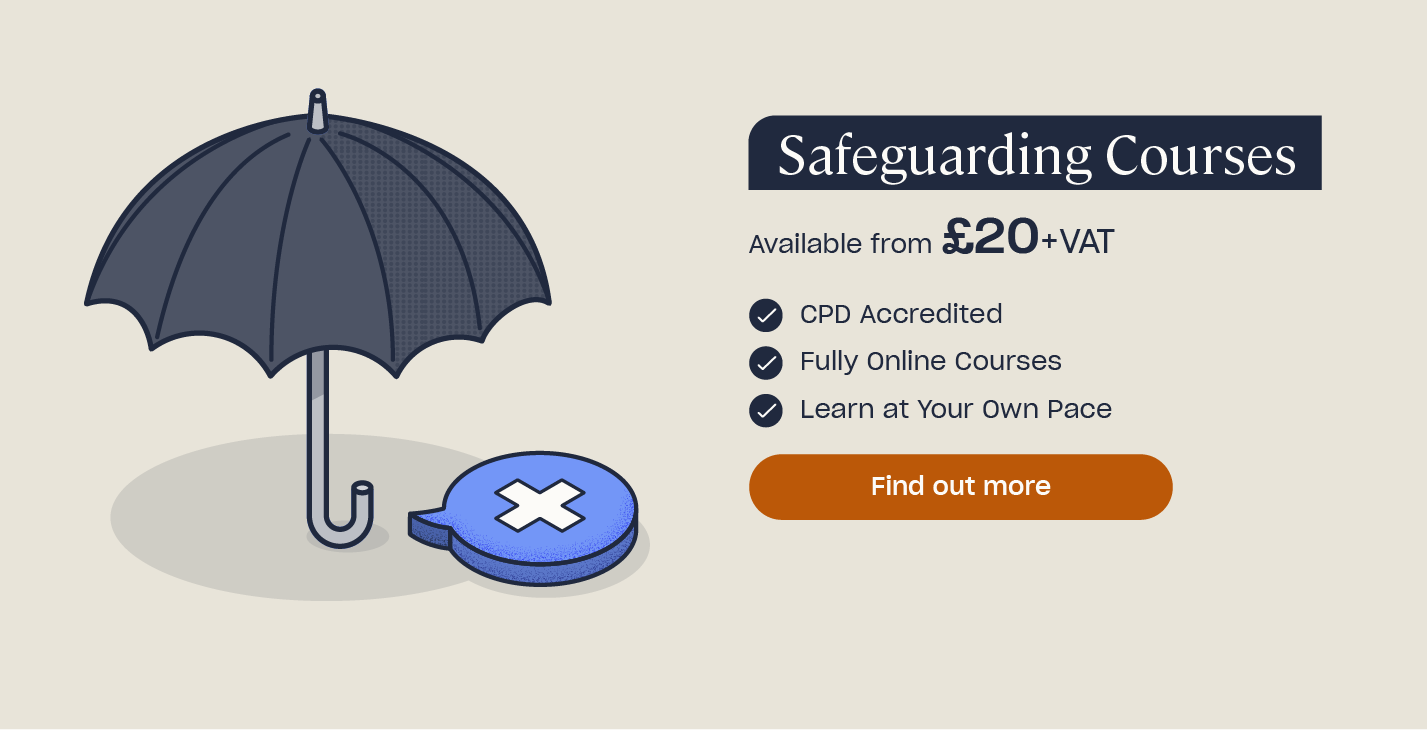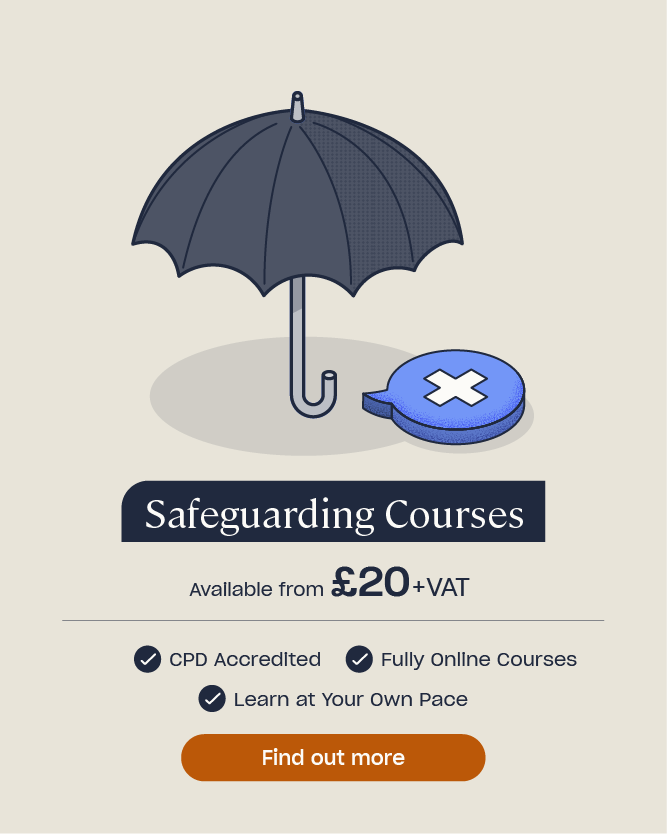What is Hate Crime and Mate Crime?
Anyone can be a victim of hate or mate crime and it’s vital that these incidents, or suspected incidents, are taken seriously. Safeguarding is everyone’s responsibility, and understanding how to recognise when such a crime may be taking place and how to act, can help to better protect those in need.
This article will define what hate crime is and explain its links with mate crime. We will also take a look at the signs to look out for that may indicate this crime could be taking place and discuss how you can support a victim of hate or mate crime.
What is Hate Crime?
Hate crime is a term often used to refer to a crime or incident that is motivated by prejudice towards a person because of a protected characteristic. It should be noted that it is still a criminal offence, even if the victim does not have the characteristic that the perpetrator mistakenly believes them to have.
Hate crime legislation recognises five protected characteristics, these are:
- Disability.
- Race.
- Religion.
- Sexual orientation.
- Transgender identity.
Hate crime is a form of discriminatory abuse, for more information regarding this and other types of abuse, take a look at our signs of abuse article.

Types of Hate Crime
For a lot of hate crimes, people are victimised because the perpetrator thinks they are different. The ways in which people are affected by hate crime can vary, but hateful acts commonly fall into one of four main categories, these are:
- Physical assault.
- Verbal abuse.
- Incitement to hatred.
- Criminal damage.
Whilst there are five protected characteristics, it is common for crimes to be targeted at people who stand out for other reasons, such as the way they dress or the activities they take part in. Police can, and will, record incidents of abuse based on any form of prejudice and not solely those that fall under hate crime legislation.
The types of incidents that occur as a result of hate and ill will can vary in severity, but all should be taken seriously and should not be ignored. Some common incidents include:
- Verbal abuse like name calling or inappropriate jokes.
- Harassment, bullying or intimidation.
- Physical assaults, including sexual assault.
- Threats of violence.
- Online abuse, hate mail, hoax calls, abusive phone calls or texts.
- Property damage, such as graffiti, arson, littering in your garden, etc.
- Displaying or circulating discriminatory literature or images.
- Making false or malicious complaints.
- Theft or burglary.

Hate and Mate Crime
UK law does not have a statutory definition of mate crime. However the term generally refers to a person befriending another with the intention of exploiting or abusing them. Whilst not always the case, often, the victim is someone who has care or support needs or is otherwise at risk of harm or abuse.
Individuals may be more at risk of abuse due to a cognitive or physical disability, being a victim of abuse in the past, lacking stability in their home life, or a host of other reasons that could make them more accepting of the ‘mate’ and their behaviour in their lives. The perpetrator could be anyone, and may hold a status of close friend, carer or even a family member, the existing relationship will be used to leverage their exploitation of the victim.
Hate and mate crime are often closely linked, however there are both similarities and differences to each of these crimes. In an attempt for the ‘mate’ to gain what they want from the victim, e.g. money, sex, criminal participation, etc, the perpetrator is likely to rely on similar acts seen with hate crimes. For example, physical or verbal abuse, theft, harassment and bullying. The main differences between these two crimes is that hate crimes are often committed by strangers and mate crime by those perceived as well known to the victim.
Want to Learn More?
Safeguarding is everyone’s responsibility, particularly for those who work with or support young people or adults at risk. We have a range of Safeguarding courses designed for workers at all levels.
What are the Signs of Mate Crime?
It may be difficult to spot the signs of mate crime as the perpetrators will often pretend to be a friend, whilst those being victimised may not be able to see the imbalance of power and the abuse taking place within the relationship. There can also be different types of abuse that take place during mate crime, such as:
- Financial abuse.
- Physical abuse.
- Emotional abuse.
- Sexual abuse.
Some common signs to look out for that can indicate a person is a victim of mate crime include:
- A change in their routine, behaviour and/or appearance.
- Being suddenly short of money, missing possessions or changing their will.
- Unpaid bills.
- New friends or acquaintances hanging around, and no longer being around their usual friend and family groups as much as before.
- A negative change in their mental health.
- Taking part in sexual acts or behaviours they are not comfortable with.
- Having a sexually transmitted disease.
- Unexplained injuries.
- Changes in their home and surroundings, perhaps signs of parties having taken place.
- Having a friend that often tells them what to do.
- Lending money or possessions to their ‘mate’ or regularly buying or paying for things for them.
- Becoming increasingly secretive.
These are just a few of the signs that can indicate abuse and/or a mate crime is taking place. The signs will differ, but it is important to be mindful of any changes that occur that have a negative impact on an at risk person’s safety and wellbeing.

How to Support Victims of Hate or Mate Crime
Following safeguarding practices is one way to help protect and support those most likely to be targeted for these types of crime. Being able to confidently spot the signs of these crimes and understanding how to talk to a victim of these crimes are important parts of being able to offer the appropriate support. Increasing awareness of the issue is also incredibly important when it comes to preventing these crimes.
To help raise awareness and therefore increase the chances of preventing the occurrence of such crimes, posters and/or leaflets detailing those participating in the Safe Places Scheme, such as libraries, GP surgeries, hospitals and community centres should be distributed and displayed for those in need to see.
If you believe that a crime may be taking place or you have any safeguarding concerns regarding an individual, do not ignore it. Depending on the circumstances and whether you are acting in a working capacity, your next steps may differ. You should always follow your organisation’s safeguarding policies and procedures regarding children, young people, or adults at risk to ensure a referral is made when appropriate and to the correct service.
This form of abuse is a crime, therefore, you should contact the police if you suspect a hate or mate crime may be taking place. For further information on escalating your concerns, the metropolitan police have guidance on how to report a hate crime.
It is important for everyone to understand how best to protect those most at risk of harm and abuse and how to recognise when it may be taking place. Both hate and mate crime are serious, regardless of how minor an act may seem. Escalating any concerns, big or small and raising awareness of these issues, can help to prevent its occurrence.
Further Resources:
- What is Cuckooing?
- Duty of Care in Health and Social Care: Responsibilities & Examples
- Online Safeguarding Courses











